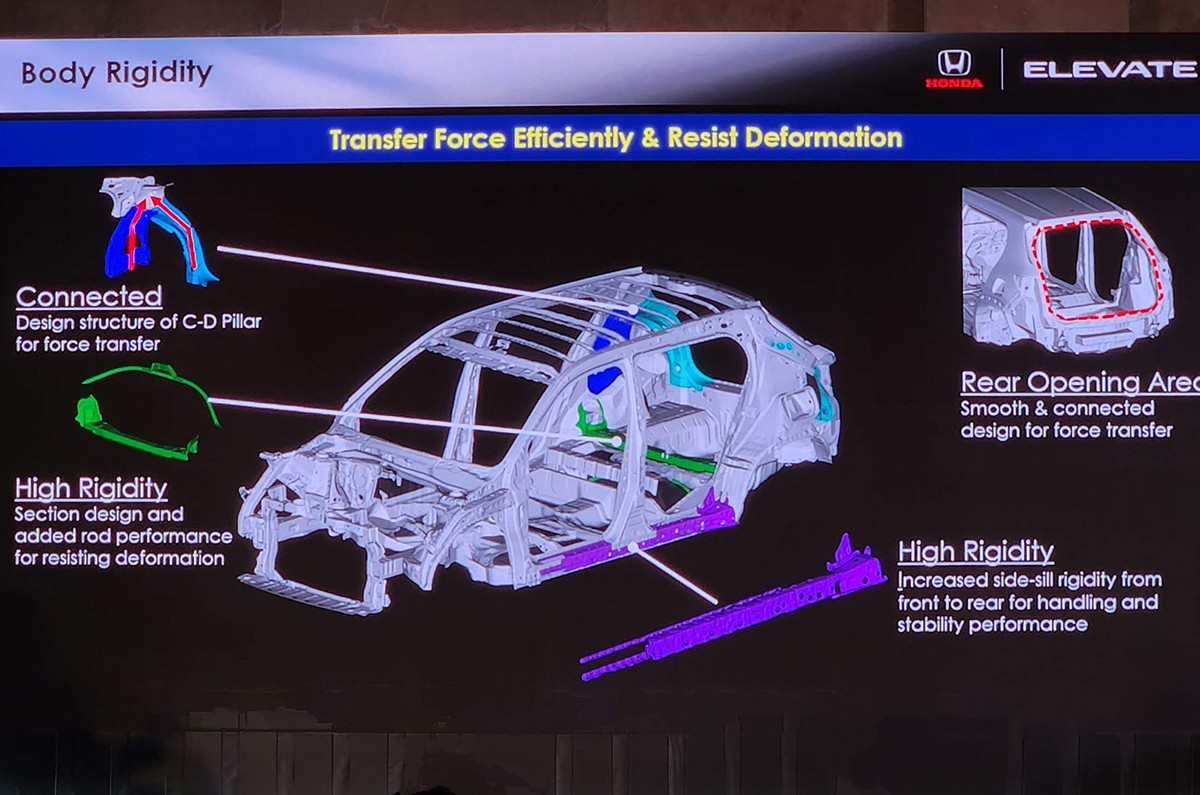The Honda Elevate, the brand’s second stab at the midsize SUV segment, is due to go on sale in a month’s time, and buzz around the vehicle is already high. And as with any new car launched these days, people are asking questions pertaining to safety and, specifically, crash test performance. However, Honda is not opposed to the idea of submitting the Elevate for an independent crash test, and, in fact, is confident its new SUV will receive a high score, if so.
- High bonnet helps Elevate meet Indian pedestrian safety standards
- Elevate gets 6 airbags on the top-spec variant
Last-gen models scored four stars in GNCAP
Part of that confidence stems from the fact that the now-discontinued Honda Jazz and the Gen 4 Honda City both came back with a 4-star rating from Global NCAP in tests conducted in 2022. Now, this was under the independent agency’s older testing regime, and while the City managed a four-star child occupant score, the Jazz only scored three stars in this regard.
That said, these were also outgoing models at the end of their life cycles, with the sedan having been launched in 2014 and the hatchback in 2015. Since then, newer models like the Elevate are better equipped, with the likes of six airbags and vehicle stability assist. However, at the time of writing, it’s unclear whether these will be offered across the model range, which would affect the SUV’s score.
Honda representatives, however, reiterated that the brand’s newer models only improve on their older counterparts in terms of structural integrity, strength, and energy absorption and dissipation from the body shell. Honda calls it Advanced Compatibility Engineering, or ACE, which is the brand’s global standard, and it says it would never take a step backwards in this regard.
High window line for better side impact score
The Elevate, meanwhile, has additional bracing in its side sills beneath the doors, as well as the C- and D-pillar regions for even greater structural strength. Honda also says that with its high bonnet, the Elevate meets India’s AIS-100 pedestrian safety standard.
Munetsugu Kaneko, the Large Project Leader (LPL) for the Honda Elevate, also revealed that the SUV was intentionally given a high window line for greater strength in a side impact. “For international markets, the side impact test is a very important safety test and a high window line gives us better results,” Kaneko says.
Side-impact crash tests are now a part of Global NCAP testing procedure and have been a crucial part of other international crash testing protocols. After all, India will be the global export hub for the Elevate, and unlike the City, which is largely confined to the Asian markets, the SUV will be exported all over the world.
Also see:


